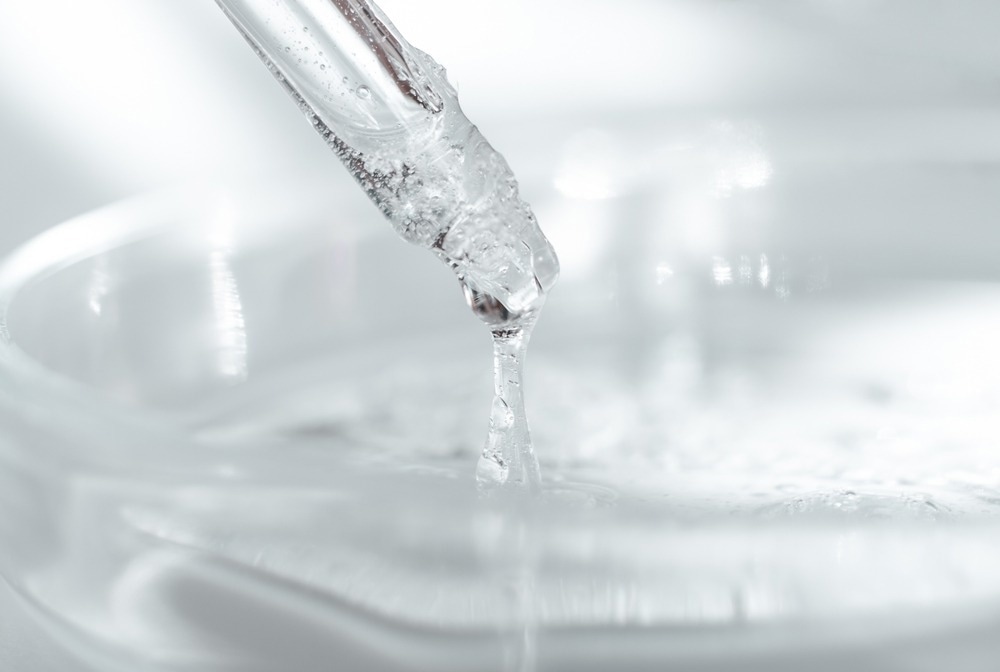A team of researchers recently published a paper in the Journal of Industrial and Engineering Chemistry that demonstrated the preparation of self-healing, fatigue-resistant, and antifreeze supramolecular hydrogels for stretchable sensors using a simple one-step method.

Study: Robust, fatigue resistant, self-healing and antifreeze ionic conductive supramolecular hydrogels for wearable flexible sensors. Image Credit: Anastasiya Shatyrova/Shutterstock.com
Background
Stretchable/flexible sensors are increasingly gaining attention for different applications, such as human-machine interfaces, soft robotics, and electronic skins. The existing flexible sensors composed of electrically conducting materials and insulating elastomer matrix display enhanced sensitivity to small strains. However, these sensors are not sensitive to large strains due to poor compatibility and percolation networks.
Ionic conductive hydrogels were studied extensively as effective flexible sensors due to their biocompatibility, toughness, and flexibility. For instance, ionic conductive polyacrylamide/agar/lithium chloride double-network hydrogels for wearable sensors were synthesized successfully with 2.2 MJ/m3 toughness, 1680% extension, and 0.22 MPa tensile strength.
However, the ionic conductive hydrogels composed of chemical crosslinked networks are not suitable for practical sensing applications as they possess lower dissipative energy, toughness, and mechanical strength. Fatigue-resistant sensing and mechanical properties are crucial for wearable electronic devices.
The failure of sensors to return to their initial states after being deformed due to several continuous tensions can lead to a reduction in service life, insensitive response, and instability in electrical conductivity. Moreover, physically damaged sensors can completely stop functioning due to weak self-healing ability.
In hydrogel-based sensors, the water can form ice crystals at lower temperatures, which can make the sensors inflexible and cause them to lose their sensing abilities and softness. Thus, synthesizing hydrogel-based ionic conductive sensors with exceptional properties has remained an enormous challenge.
Salting out is considered a crucial method to improve the mechanical properties of hydrogels. For instance, robust poly (vinyl alcohol) (PVA) hydrogels were synthesized by freezing and soaking the hydrogels in sodium chloride (NaCl). However, the soaking method can be cumbersome and time-consuming.
The Study
In this study, researchers synthesized a new type of biosystem-inspired fully physical crosslinked ionic conductive poly (N-hydroxyethyl acrylamide) (PHEA)/PVA/NaCl (PHEA/PVA/NaCl) supramolecular hydrogels that can serve as flexible high-performance sensors using a simple one-step method based on multiple hydrogen bond interactions and salting-out effect.
PVA, NaCl, monomer HEA, and 2-hydroxy-4'-(2-hydroxyethoxy)-2-methylpropiophenone/initiator were utilized as the starting materials for the study. Initially, the PVA powder was heated at 95 oC for 1.5 h under magnetic stirring to dissolve it completely. NaCl was mixed with the PVA powder during the stirring process at 0.5 h. The initiator and monomer were then added to the as-prepared solution.
Subsequently, the resultant mixture was injected into a square glass mold with a one mm spacer and irradiated under ultraviolet light with eight W intensity and 365 nm wavelength for one h to perform a photo-initiated polymerization to obtain the PHEA/PVA/NaCl supramolecular hydrogels.
In every experiment, the concentration of PVA was maintained at 10 wt% in water, while the initiator concentration was kept at one mol% of monomer. The HEA and NaCl concentrations in water were fixed at 10-40 wt% and 0-14 wt%, respectively. PHEA/PVA and PHEA hydrogels were also synthesized using the same method for comparison.
Raman spectroscopy, Fourier transform infrared (FTIR) spectroscopy, dynamic rheological tests, scanning electron microscopy (SEM), and differential scanning calorimetry (DSC) were performed for the characterization of the synthesized samples.
Researchers also performed mechanical tests using a WSM universal tester with a 100 mm/min stretching velocity at room temperature and a 100 N loading unit with sensing and electrical tests. The sensing tests involved human activity monitoring to assess the self-healing sensing ability of the hydrogels.
Observations
Self-healing, robust, fatigue-resistant, and anti-freezing physical crosslinked PHEA/PVA/NaCl ionic conductive supramolecular hydrogels for flexible wearable sensors were synthesized successfully using a facile one-step synthesis method.
Monomer HEA self-crosslinked through its hydrogen bonds to form physical crosslinked networks/structures and formed hydrogen bond interactions with the covalently bonded PVA long chains. PVA chain entanglements were induced by the salting out of NaCl, which improved the mechanical performances of the PHEA/PVA/NaCl gels.
These physical interactions endowed the PHEA/PVA/NaCl supramolecular hydrogels with 1028 J/m2 tearing energy, 0.51 MPa tensile strength, up to 85% self-recovery after two min rest and 99% after 30 min rest without external stimuli, higher dissipative energy, and good self-healing properties and fatigue resistance.
The NaCl addition improved the frost resistance, electrical conductivity, and long-term weight stability of the hydrogels. PHEA/PVA/NaCl hydrogel-based flexible sensors also demonstrated anti-freezing and highly stable, fatigue-resistant, and sensitive sensing performances.
Moreover, the strain sensors possessed superior self-healing properties and durability due to their excellent mechanical and moisture-retention properties. Different physiological activities and motions of the human body, such as the finger, wrist, and elbow bending, were also detected repeatedly and sensitively by these sensors.
Taken together, the findings of this study demonstrated that sensors based on antifreeze, self-healing, and fatigue-resistant ionic conductive supramolecular hydrogels could be used feasibly as wearable electronic devices over an extensive range of operating temperatures or even when the devices are physically damaged.
More from AZoM: ICP-MS for Trace Metal Analysis
Disclaimer: The views expressed here are those of the author expressed in their private capacity and do not necessarily represent the views of AZoM.com Limited T/A AZoNetwork the owner and operator of this website. This disclaimer forms part of the Terms and conditions of use of this website.
Source:
Qin, G., Chen, Q., Kang, Q. et al. Robust, fatigue resistant, self-healing and antifreeze ionic conductive supramolecular hydrogels for wearable flexible sensors. Journal of Industrial and Engineering Chemistry 2022. https://www.sciencedirect.com/science/article/pii/S1226086X22004221?via%3Dihub